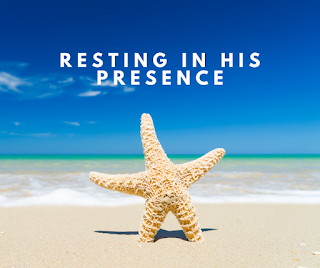Resting in His Presence

Welcome to my blog where we can have a wonderful chit-chat together! Whether you're looking for tips, stories, inspirationals, or simply want to share experiences, this is the perfect place for you. I cover a wide range of topics including Christian life, travel, foods, and job-related insights. Join me as we explore the world, seek spiritual growth, and find inspiration in each other's stories. Let's connect and share the joys and challenges of life together.

This blog provides an in-depth look into Philippine weather, the factors that influence it, and a guide to understanding typhoons—one of the most common weather phenomena that Filipinos deal with annually.
The Philippines has a tropical maritime climate, which means it is hot, humid, and prone to frequent rainfall. The country's weather is mainly influenced by the following:
Monsoon Winds: The Philippines experiences two monsoon seasons:
Intertropical Convergence Zone (ITCZ): This is a belt of converging trade winds and rising air that influences the weather, often causing rain and thunderstorms.
Tropical Cyclones: Typhoons form over warm ocean waters and can bring destructive winds, heavy rainfall, and severe flooding.
El Niño and La Niña Phenomena: El Niño results in reduced rainfall and drought conditions, while La Niña brings cooler than average sea temperatures and more rainfall, often intensifying typhoons.
The typhoon season in the Philippines generally starts in June and lasts until December, with the peak occurring from July to September. Typhoons, locally referred to as bagyo, are tropical cyclones that develop over the warm waters of the Western Pacific Ocean. When they enter the Philippine Area of Responsibility (PAR), they are monitored by the Philippine Atmospheric, Geophysical, and Astronomical Services Administration (PAGASA), which issues warnings and updates on their strength and trajectory.
Typhoons are classified by their wind speeds, and the country has a five-tier warning system known as the Tropical Cyclone Wind Signals (TCWS):
Throughout its history, the Philippines has been hit by some of the strongest typhoons on record. Some notable ones include:
Typhoon Yolanda (Haiyan): One of the most powerful tropical cyclones ever recorded, it hit the Philippines in November 2013, particularly devastating the Visayas region. It caused massive loss of life and property damage, highlighting the country’s vulnerability to such disasters.
Typhoon Ondoy (Ketsana): In 2009, Typhoon Ondoy dumped an unprecedented amount of rainfall over Metro Manila, causing severe flooding and affecting millions of people.
Typhoon Ulysses (Vamco): In November 2020, Typhoon Ulysses caused widespread flooding in Luzon, including Metro Manila, further exacerbated by previous weather disturbances.
Typhoons form over warm ocean waters, typically at temperatures above 26°C (79°F). As water vapor rises, it condenses into clouds, releasing heat and providing energy for the storm to grow. The process leads to the development of a low-pressure area, around which winds begin to circulate. When wind speeds reach at least 74 mph (119 km/h), it is officially classified as a typhoon.
Typhoons can cause a variety of hazards in the Philippines:
Strong Winds: High winds can damage infrastructure, uproot trees, and knock down power lines, leading to widespread power outages.
Heavy Rainfall: Intense rain can cause flooding in low-lying areas, displacing communities and damaging homes and businesses.
Storm Surges: The force of the typhoon pushes seawater onto the land, causing significant coastal flooding, which can be catastrophic to coastal towns and cities.
Landslides: Typhoons often lead to landslides, especially in mountainous regions, due to the saturation of soil from continuous rainfall.
To minimize the impact of typhoons, preparation is key. Here are some essential tips for preparing for a typhoon:
Stay Informed: Always monitor updates from PAGASA and other reliable weather services. Early warnings give time for necessary preparations.
Prepare an Emergency Kit: Have an emergency bag ready with basic necessities like food, water, flashlights, batteries, and important documents in waterproof containers.
Secure Your Home: Reinforce windows, doors, and roofs to withstand strong winds. Trim trees and clear drainage to prevent flooding.
Evacuate if Necessary: If local authorities recommend evacuation, do not hesitate. Head to designated evacuation centers to avoid dangerous areas.
The Philippine weather is shaped by various factors, but typhoons remain the most significant threat to the country. As climate change continues to alter global weather patterns, the frequency and intensity of typhoons may increase, making it essential for every Filipino to stay informed and prepared. By understanding the science behind these storms and taking proactive measures, the Philippines can minimize the impact of typhoons and better protect its people and resources.
Stay safe and informed!
Comments